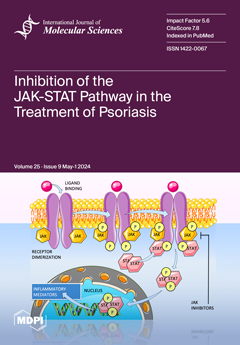The majority of the world’s natural rubber comes from the rubber tree (
Hevea brasiliensis). As a key enzyme for synthesizing phenylpropanoid compounds, phenylalanine ammonia-lyase (PAL) has a critical role in plant satisfactory growth and environmental adaptation. To clarify the characteristics of rubber tree PAL family genes, a genome-wide characterization of rubber tree
PALs was conducted in this study. Eight
PAL genes (
HbPAL1-
HbPAL8), which spread over chromosomes 3, 7, 8, 10, 12, 13, 14, 16, and 18, were found to be present in the genome of
H. brasiliensis. Phylogenetic analysis classified HbPALs into groups I and II, and the group I HbPALs (HbPAL1-HbPAL6) displayed similar conserved motif compositions and gene architectures. Tissue expression patterns of
HbPALs quantified by quantitative real-time PCR (qPCR) proved that distinct
HbPALs exhibited varying tissue expression patterns. The
HbPAL promoters contained a plethora of
cis-acting elements that responded to hormones and stress, and the qPCR analysis demonstrated that abiotic stressors like cold, drought, salt, and H
2O
2-induced oxidative stress, as well as hormones like salicylic acid, abscisic acid, ethylene, and methyl jasmonate, controlled the expression of
HbPALs. The majority of
HbPALs were also regulated by powdery mildew, anthracnose, and
Corynespora leaf fall disease infection. In addition,
HbPAL1,
HbPAL4, and
HbPAL7 were significantly up-regulated in the bark of tapping panel dryness rubber trees relative to that of healthy trees. Our results provide a thorough comprehension of the characteristics of
HbPAL genes and set the groundwork for further investigation of the biological functions of
HbPALs in rubber trees.
Full article






